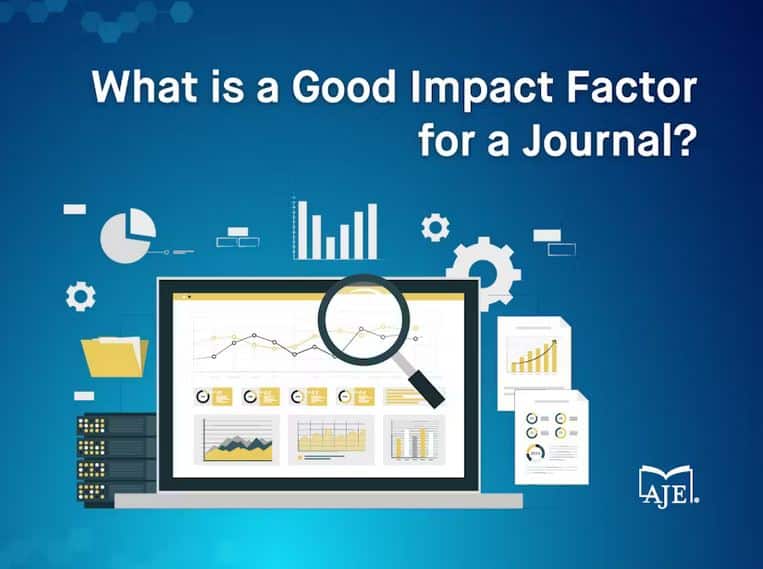Introduction
Evaluating the quality and impact of academic journals is crucial for researchers, institutions, and funding agencies. Various bibliometric indicators have been developed to assess journal influence, with each metric having its methodology, strengths, and limitations. This article provides a detailed comparison of the most widely used journal impact metrics, including Impact Factor (IF), SCImago Journal Rank (SJR), CiteScore, Eigenfactor Score, and h5-index. We will analyze their calculation methodologies, advantages, disadvantages, and how they compare in journal rankings.

1. Journal Impact Factor (JIF)
1.1 Definition and Calculation
The Impact Factor (IF) is one of the most widely recognized and used journal ranking metrics. Eugene Garfield introduced it in the 1960s and published it annually in the Journal Citation Reports (JCR) by Clarivate Analytics (formerly Thomson Reuters).
The Impact Factor is calculated as follows: For example, if a journal in 2024 received 500 citations for articles published in 2022 and 2023 and published 200 articles in those years, the 2024 Impact Factor would be 2.5.
1.2 Strengths
• Widely accepted: The IF is the most recognized and used metric by researchers and institutions.
• Easy to interpret: It provides a straightforward ratio of citations per article.
• Useful for short-term impact: Evaluates how frequently articles are cited within a short time.
1.3 Limitations
• Subject area differences: IF favors disciplines with rapid publication cycles (e.g., medicine) over those with slower citation patterns (e.g., humanities).
• Skewed by a few highly cited papers: A single highly cited paper can disproportionately raise a journal’s IF.
• Not article-level: It evaluates journals, not individual articles or authors.
2. SCImago Journal Rank (SJR)
2.1 Definition and Calculation
SCImago Journal Rank (SJR) is developed by the SCImago Research Group based on Scopus data. Unlike the IF, SJR considers both the number of citations and the prestige of the citing journals.
SJR is calculated using a PageRank algorithm, where:
• Citations from high-ranking journals weigh more than those from lower-ranking journals.
• Self-citations are controlled to prevent manipulation.
2.2 Strengths
• Field-normalized: Accounts for subject-specific citation practices.
• Prestige-weighted: Citations from high-quality journals contribute more to a journal’s rank.
• Based on a larger dataset: It uses Scopus, which covers more journals than Web of Science.
2.3 Limitations
• Less known than IF: Although widely used, it lacks the universal recognition of IF.
• Complexity: The methodology is less transparent and harder to interpret.
• Lag in updates: Not updated as frequently as IF.
3. CiteScore
3.1 Definition and Calculation
CiteScore, introduced by Elsevier, is an alternative metric based on Scopus data. It is calculated as:
Unlike IF, CiteScore considers a 3-year citation window instead of 2 years, and includes all document types (e.g., reviews, editorials).
3.2 Strengths
• More inclusive: Covers all document types, not just research articles.
• Based on a broader database: Uses Scopus, which indexes more journals than Web of Science.
• Field-normalized: Ranks journals within specific subject categories.
3.3 Limitations
• Favors high-output journals: Journals with many publications can have a higher CiteScore.
• Less prestige-weighted: Unlike SJR, it does not differentiate between high- and low-quality citations.
• Newer metric: Not as established as IF.
4. Eigenfactor Score
4.1 Definition and Calculation
The Eigenfactor Score (ES), developed by Carl Bergstrom, evaluates the overall influence of a journal by considering both the number of citations and the importance of citing sources. It uses a 5-year citation window and applies an algorithm similar to Google’s PageRank.
Unlike IF, self-citations are heavily penalized.
4.2 Strengths
• Prestige-based: Citations from reputable journals have more weight.
• Longer citation window: Considers 5 years, making it more stable.
• Not influenced by self-citations.
4.3 Limitations
• Less intuitive: The methodology is complex and challenging to interpret.
• Not widely used: While applicable, it is less commonly referenced than IF or SJR.
5. h5-Index (Google Scholar Metrics)
5.1 Definition and Calculation
Google Scholar introduced the h5-index to evaluate journals based on their most cited articles over the past 5 years. It is defined as the highest number h such that at least h articles in the journal received at least h citations.
For example, if a journal’s h5-index = 30, it means 30 articles received at least 30 citations each.
5.2 Strengths
• Broader coverage: Includes conference papers, preprints, and non-traditional sources.
• Considers long-term impact: A 5-year window balances recent and long-term citations.
• Free and open-access: Unlike IF and SJR, it does not require a subscription.
5.3 Limitations
• Quality concerns: Includes non-peer-reviewed sources, leading to possible inconsistencies.
• Not field-normalized: May not fairly compare journals across disciplines.
Section Two: Peripheral Websites Offering Impact Factors: An Overview
In addition to well-established journal ranking systems like Impact Factor (IF), SCImago Journal Rank (SJR), CiteScore, and Eigenfactor Score, several peripheral websites provide alternative or unofficial impact factor calculations. These websites often target niche audiences, covering journals excluded from major databases such as Web of Science (WoS) and Scopus. While some serve as useful supplementary resources, others lack transparency or credibility, raising concerns about accuracy and reliability.
This article explores some of these peripheral journal impact factor providers, analyzing their methodologies, benefits, and limitations.
1. ResearchGate Journal Metrics
1.1 Overview
ResearchGate is a widely used academic social network that also provides citation-based metrics for journals. While not an official impact factor provider, it calculates a ResearchGate Score that reflects the visibility and engagement of journals and researchers.
1.2 How It Works
•ResearchGate aggregates citations, downloads, and interactions within its platform. Unlike traditional impact factors, it considers social engagement metrics, such as recommendations and discussions. It is more researcher-centric rather than journal-focused.
1.3 Strengths
• Broad Coverage: Includes journals that are not indexed in WoS or Scopus.
• Alternative Citation Insights: Tracks article views and interactions beyond traditional citations.
• Free Access: Researchers can check journal scores without a subscription.
1.4 Limitations
• Lack of Standardization: Metrics are influenced by ResearchGate’s user activity rather than rigorous citation analysis.
• Not Officially Recognized: Most institutions and funding agencies do not consider ResearchGate metrics for academic evaluation.
• Can Be Manipulated: Since it considers engagement, researchers can inflate scores through artificial interactions.
2. Global Impact Factor (GIF)
2.1 Overview
Global Impact Factor (GIF) is a commercial website that assigns impact factors to journals, including many that are not indexed in Web of Science or Scopus. It aims to provide a ranking system for lesser-known and regional journals.
2.2 How It Works
GIF claims to calculate impact factors based on journal citations and article output. Unlike Clarivate’s Impact Factor, GIF does not disclose the precise details of its calculation process.
2.3 Strengths
Covers Unindexed Journals: Provides a ranking system for journals omitted from mainstream databases. Appeals to Developing Regions: Helps regional journals gain visibility.
2.4 Limitations
• Lack of Transparency: The methodology is unclear, making its credibility questionable.
• Potential for Misuse: Some predatory publishers exploit GIF to advertise their journal impact falsely.
• Not Recognized by Academia: Universities and funding agencies do not accept GIF rankings for evaluation purposes.
3. Scientific Journal Impact Factor (SJIF)
3.1 Overview
Scientific Journal Impact Factor (SJIF) is another peripheral ranking system that provides impact factors for a wide range of journals, including open-access and non-indexed journals.
3.2 How It Works
SJIF claims to analyze citations, journal visibility, and indexing status to assign scores. It is privately managed and lacks an external verification process.
3.3 Strengths
• Covers Non-Indexed Journals: Useful for authors publishing in regional or emerging journals.
• Easier Recognition for Journals: Journals excluded from WoS or Scopus can use SJIF for visibility.
3.4 Limitations
• Unclear Methodology: The impact factor calculations are not transparent.
• Not Peer-Reviewed: The scoring system lacks independent verification.
• Used by Predatory Journals: Many questionable journals display SJIF to appear legitimate.
4. Universal Impact Factor (UIF)
4.1 Overview
Universal Impact Factor (UIF) is a privately maintained ranking system that assigns impact factors to journals outside Web of Science and Scopus. Similar to GIF and SJIF, it lacks recognition from authoritative bodies.
4.2 How It Works
• UIF claims to evaluate citations and journal quality, but its methodology remains undisclosed.
• Reputable databases do not index many journals listed on UIF.
4.3 Strengths
• Provides a Metric for Non-Indexed Journals: Allows smaller journals to showcase an impact score.
• Easily Accessible: No subscription is required.
4.4 Limitations
• Low Credibility: UIF is not accepted by leading academic institutions.
• Not Audited by Experts: Lacks independent verification or peer review.
• Used by Predatory Publishers: Some low-quality journals falsely advertise UIF scores to attract authors.
5. Index Copernicus (ICV – Index Copernicus Value)
5.1 Overview
Index Copernicus is a Poland-based journal evaluation system that provides the Index Copernicus Value (ICV), which ranks journals based on self-reported data and specific undisclosed parameters.
5.2 How It Works
Journals submit their information to Index Copernicus for evaluation. The ICV score is determined using undisclosed criteria, combining journal visibility, citations, and editorial processes.
5.3 Strengths
• Covers a wide range of journals, including lesser-known and regional journals.
• Freely Available: No subscription is required.
5.4 Limitations
• Self-Reported Data: Journals submit their information, increasing the risk of bias.
• Unverified Scores: ICV calculations lack independent validation.
• Not Recognized by Academics: Major institutions and indexing services do not consider ICV a credible impact factor.
6. Google Scholar Metrics (h5-Index Alternative)
6.1 Overview
While Google Scholar Metrics is not a traditional impact factor provider, it offers an alternative ranking system based on the h5-index.
6.2 How It Works
• The h5-index measures citations received by a journal’s top h papers over the past 5 years.
• Unlike IF, it includes conference proceedings and preprints.
6.3 Strengths
• Covers a broad range of journals, including open-access, regional, and non-indexed journals.
• Freely Accessible: No need for institutional subscriptions.
• Field-Specific Comparisons: Allows users to browse subject-based rankings.
6.4 Limitations
• Not Field-Normalized: A high h5-index in one field may not be equivalent to the same value in another.
• Quality Concerns: Includes sources that may not be rigorously peer-reviewed.
Conclusion
While major impact factors like JCR Impact Factor, SJR, CiteScore, and Eigenfactor Score remain the gold standard for academic journal ranking, peripheral websites like GIF, SJIF, UIF, and Index Copernicus provide alternative rankings for non-indexed journals.
Key Takeaways:
Google Scholar Metrics and ResearchGate offer alternative citation-based rankings with broader coverage. Global Impact Factor (GIF), SJIF, UIF, and Index Copernicus are often associated with predatory journals due to a lack of transparency. Researchers should be cautious when using metrics from unofficial sources, as these may lack credibility and rigorous evaluation. Ultimately, authors and institutions should rely on reputable impact factors for academic decision-making while using peripheral metrics only as supplementary indicators.
